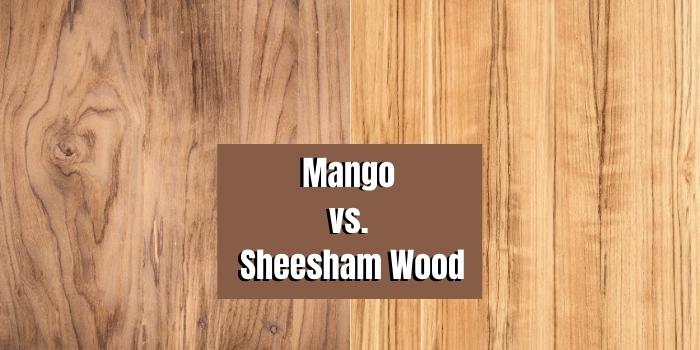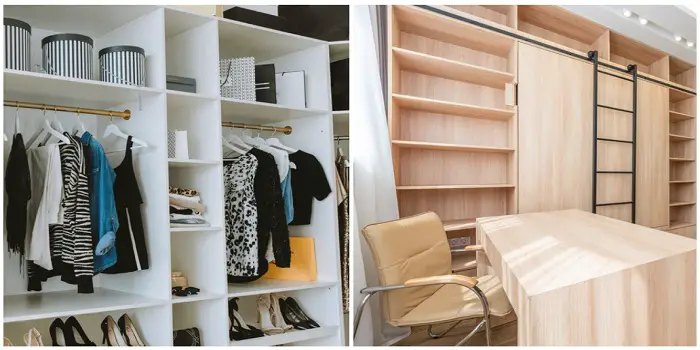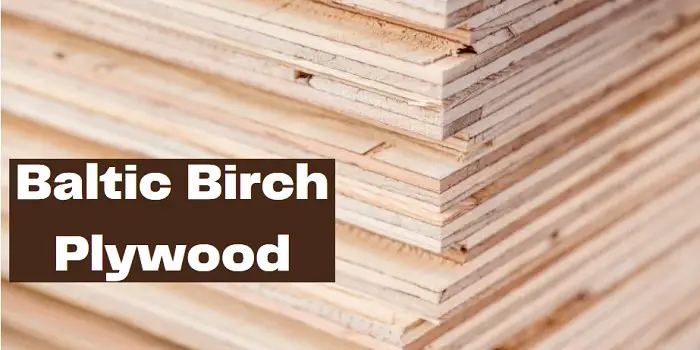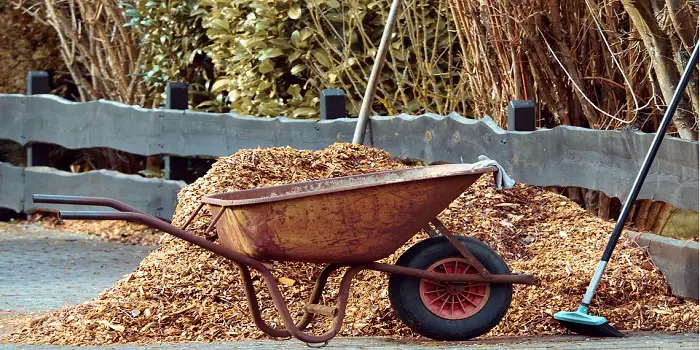
Bark mulch is the stock standard material used to cover gardens to create a better aesthetic.
It also provides other benefits such as fighting off weeds, keeping moisture from escaping, providing insulation to your plants during colder months, keeping your topsoil in good condition, and it becomes food for your plants as it decomposes.
One major factor, however, you should consider is that mulch is combustible and can become highly flammable during dryer months.
Some of the alternatives below are excellent options so that you don’t have any accidental fires raging in your gardens. These may have different aesthetics, are cheaper, or are even more environmentally friendly.
Non Flammable Mulch Alternatives
Mulch is a vital component of landscaping and gardening, but its flammability can pose a serious fire hazard, especially in dry or wildfire-prone areas.
Non-flammable mulch offers a safer alternative while still providing the benefits of traditional mulch. Especially, using non-flammable mulch near buildings, fences, and other structures can slow down or prevent fire spread, offering critical protection in dry or high-risk areas.
Here are a few popular substitutes you can use when a fire is a significant risk in your area, especially when the garden is close to your home or other structures.
1. Pea Gravel
Pea gravel is the unsung hero of landscaping, born from the tireless work of rivers eroding rocks into smooth, bite-sized nuggets. These are about 3/8″ in diameter and are also known as CM16, pea stone, pea pebbles, and pea rock.
If mulch had an upgrade button, pea gravel would be it. It blocks weeds, locks in moisture, and adds serious style points to your garden—all without rotting away or demanding endless top-ups.
And here’s the kicker: it doesn’t burn. For those in wildfire-prone areas, replacing flammable mulch with pea gravel is a safety move that also happens to look fantastic.
On the style front, pea gravel is a bit of a show-off. It comes in a variety of colors—buff, brown, gray, white, and even translucent—so you can customize your garden’s aesthetic like a pro.
Unlike sharp-edged rocks, it’s gentle on bare feet, making it a dream for pathways and patios. Plus, it won’t break the bank to have it delivered and spread.
That said, pea gravel does have a mischievous side. Without proper edging, it has a habit of wandering off, sneaking into walkways and lawns like a tiny, round escape artist. But a well-placed border keeps it in check, making it a small price to pay for a landscaping solution that’s equal parts stylish, practical, and low-maintenance.
2. Lava (Pumice) Rocks
Lava rock is another fantastic option when you don’t want to deal with the maintenance of bark mulch.
It can cost double per bag but consider that bark mulch needs to be replaced at least once a year, if not twice. So you pay a little extra, to begin with, but have significant cost savings each year.
It does depend on your taste, but lava rocks are aesthetically pleasing. Because they’re not decomposing, you keep the same look year-round.
You can decide what color you want, but generally, you can get black, grey, brown, metallic silver, pink, and even green. So, you have a lot of interesting colors that you can even mix or put in different areas for a more interesting look.
Lava rocks provide excellent temperature control and moisture retention for your plants. Be careful of using black lava rocks in very hot areas, though, as they can overheat your plants.
The advantage for hot or dry regions is that lava rocks will not catch fire, so they are much safer where there are significant fire hazards during the year.
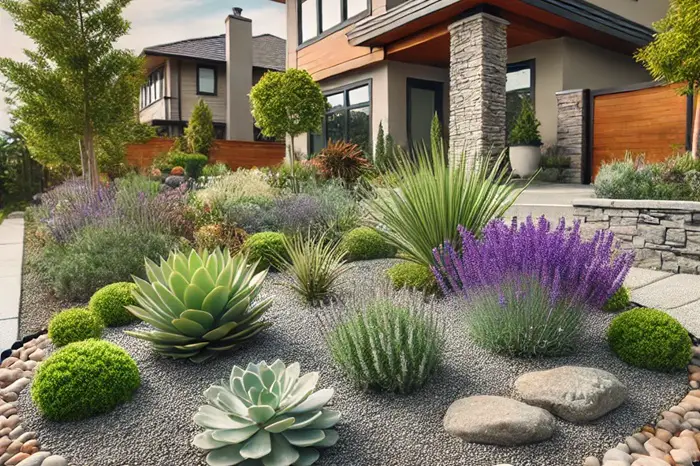
3. Decomposed Granite (DG)
Over the years, granite weathers down into tiny particles, creating a gravel-like material that’s a landscaper’s best friend. Unlike chunky gravel, DG is a mix of everything from rock dust to pebbles about 3/8 inches wide, making it a great choice for pathways, patios, driveways, and even as a mulch substitute.
It’s budget-friendly, built to last, and blends beautifully with natural surroundings—just in a much finer, more walkable form.
It’s also not flammable, unlike organic mulch. That makes DG an excellent choice for fire-prone areas, where reducing combustible materials around homes and landscapes is a smart move.
It also comes in a range of warm, earthy tones (think gold, tan, brown, and red), so it doesn’t just look natural—it is natural. And if you hate pulling weeds, good news: when properly compacted, DG makes it tough for those pesky plants to break through.
Of course, DG isn’t perfect. The loose version can be a bit high-maintenance, tracking indoors on shoes and paws. Dry conditions can kick up dust, while heavy rain might cause erosion—so edging or stabilizers are often needed. And over time, compacting can make it harder to refresh.
But despite these quirks, DG remains an affordable, low-maintenance, and visually appealing landscaping choice for those who want something natural but not boring.
4. Glass Mulch
Unlike wood chips or bark that break down over time, glass mulch stands the test of time—literally. It doesn’t decompose and is more fire-resistant ensuring that your landscaping stays vibrant season after season. Plus, its smooth, tumbled edges mean you get all the beauty of glass without the danger of sharp shards.
Since it’s crafted from repurposed materials, using this type of mulch reduces landfill waste and promotes environmental sustainability. And if you live in an area prone to wildfires, you’ll be glad to know that it won’t ignite—a major plus when safety is a concern.
Available in a variety of hues and finishes, glass mulch transforms flower beds, pathways, and garden borders into eye-catching works of art. Whether you prefer a tranquil blue reminiscent of ocean waves or a fiery red to make your plants pop, there’s a shade for every aesthetic.
5. Metal Mulch
Metal mulch is a cool, fire-smart choice for your landscape simply because its high-tech ground cover, often made from reflective materials like aluminum, is designed to tackle two major concerns: fire prevention and soil temperature control.
Unlike organic mulches that can become kindling in dry conditions, metal mulch won’t burn. This makes it a lifesaver—potentially in the most literal sense—for homeowners in wildfire-prone regions. Think of it as a firebreak for your garden, helping to stop flames from spreading while keeping your landscape looking sharp.
Reflective mulches also bounce heat away from the ground, keeping the soil cooler and less stressed. This helps plants retain moisture and thrive, even when the sun is working overtime.
However, keep in mind that unlike wood chips or straw, this isn’t a “set it and forget it” kind of mulch. Metal mulches require strategic placement to maximize their benefits without overheating nearby plants. But when used correctly, they’re an incredibly effective tool in fire mitigation and temperature regulation.
Basically, if you’re dealing with scorching summers, wildfire risks, or delicate plants that hate heat, metal mulch could be the secret weapon your landscape needs.
6. Concrete Pavers
Concrete pavers, clay, and bricks are not among traditional mulches, yet they are mulch’s tougher, fire-safe cousins—they can define spaces, reduce fire hazards, and even add structure to your outdoor design.
Strategically placing clay pavers or bricks can highlight garden beds, patios, and walkways, creating a structured, aesthetic contrast to greenery. Meanwhile, compacted soil or clay can be used in areas where you want to limit vegetation growth, such as around structures, fire pits, or xeriscaped landscapes.
However be aware that compacted soil isn’t the friendliest environment for root expansion or moisture retention, so it’s best suited for areas with minimal vegetation or fire-risk zones rather than lush, thriving flower beds.
7. Compost
Compost is another excellent option for keeping the fire away from your home. While it isn’t as aesthetically pleasing as other options, it’s a fantastic choice for behind your house, in large gardens, or in even more rural areas.
When you put compost in your garden, it not only assists with fire resistance but it’s an excellent source of food for your plants which will maintain moisture and stop soil erosion.
If your plants are not getting enough nutrients from the soil, then compost is the perfect solution to help.
Compost can be made of many different materials, some using manure and others not. You can even get composted wood chips, which we know are already excellent fire-resistant material. If the smell of compost is an issue for you, simply stay away from the manure varieties.
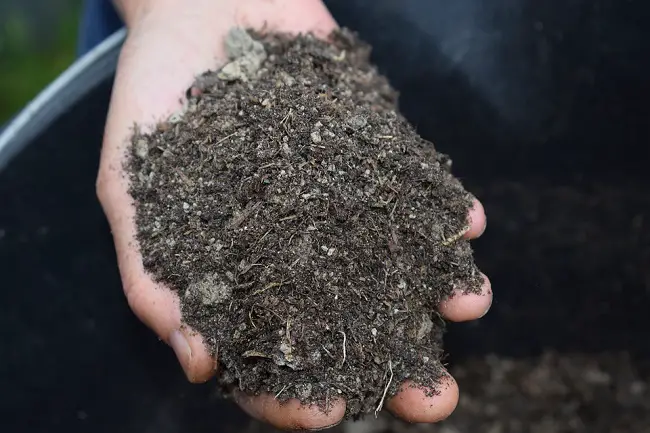
Mulch Alternatives with Limited Combustibility
A significant factor in limiting the combustibility is keeping good irrigation which keeps the mulch moist. But this is not a guaranteed method for fire resistance around your home, and it’s simply an option if you need to use bark mulch or other organic mulch.
Depending on the requirements, there is a time and place for other mulch alternatives as well. So, below are some other popular options for you to consider and assess if they are good for your environment.
1. Cocoa bean hulls
Cocoa bean hulls may not be your first thought for an alternative to mulch. Still, they have an excellent aesthetic, a sweet aroma, and even retain moisture for your plants.
These are some of the most fire-resistant organic materials you can use. However, they’re not listed in the main section due to the risk to pets like your dogs. These can also attract pests which, I find unacceptable.
2. Grass clippings and dried leaves
If you’re looking for a practically free mulch option, grass clippings are an easy pick—literally. Just mow your lawn with a grass catcher, let the clippings dry, and spread them around your plants like a cozy little blanket. Bonus: they’re packed with nutrients and help lock in moisture.
But before you start dumping fresh-cut grass all over your garden, keep in mind that while it’s great for your plants, it’s also an open invitation for fire. Like leaves, dried grass loves to burn—and not in a helpful, composting way. If you live in a fire-prone area, you might want to reconsider unless you enjoy spontaneous garden bonfires.
Speaking of leaves, they’re another budget-friendly mulch choice. Shred them, dry them, and pile on a good 2-3 inches to keep your plants happy and hydrated. The downside? Leaves break down fast, so you’ll need to keep replenishing them. Oh, and they’re basically firestarter material—one stray spark, and your mulch turns into a bonfire. So, if wildfires are a concern, better stick to something less flammable.
3. Pine needles, hay or straw
If your neighborhood is packed with pine trees or you live near farm, congratulations—you’ve got a free mulch supply at your feet.
Pine needles (aka pine straw) make a neat and visually appealing mulch option, far less messy than grass clippings or leaves. You can use them fresh or dried, depending on your aesthetic.
However, before you start layering them around your plants, remember that dried pine needles are basically nature’s matchsticks. They ignite faster than you can say “wildfire,” and once they catch, they spread like gossip in a small town. So, unless you’re aiming for an accidental bonfire, keep them far away from your home.
Now, if you live on a farm or have easy access to cheap hay or straw, you’ve got another solid (and budget-friendly) mulch option. It keeps the soil moist, suppresses weeds, and feeds your plants as it breaks down. Sounds perfect, right? Well… almost.
Here’s the catch: pests love hay and straw. Rodents, snakes, and who knows what else will gladly move in rent-free, turning your garden into a critter condo. And, just like pine needles, dried hay and straw can be flammable. So, unless you’re cool with surprise fires and uninvited guests, this mulch option might not be your best bet.
4. Wood chip mulch
You may be thinking that bark mulch and wood chip mulch is basically the same things. However, they act very differently.
Wood chip mulch in general is much more fire-resistant, so it is an excellent choice when you want the natural wood look but live in a fire-prone area.
The key to being more fire-resistant is however to ensure the underlying area is well irrigated and then layer wood chip mulch on top. A well-irrigated area with healthy lush plants will be much more difficult to catch fire while the wood chip works to absorb water and keep your plants healthy.
Wood chipping mulch also has the standard benefits you get with most mulch. It keeps pests away, has excellent temperature control, and controls weeds that try to enter your garden.
5. Rubber mulch
Rubber mulch is made up of ground-up tires; it’s long-lasting and doesn’t need to be replaced. It is a great option where insects are a big issue for your plants and for ground covers.
But before you start spreading shredded tires around like confetti, here’s the not-so-fun part: rubber mulch is both toxic and extremely flammable. It doesn’t just burn—it burns hot, and when it does, you’re in for a nasty, smoky mess. The fumes alone could make you rethink your life choices. And if you place it too close to your home? Let’s just say you’ll want a fire extinguisher on standby.
So, while rubber mulch has its perks, unless you’re using it far from buildings and aren’t too concerned about potential toxins, you might want to explore less flammable, less smoky alternatives.
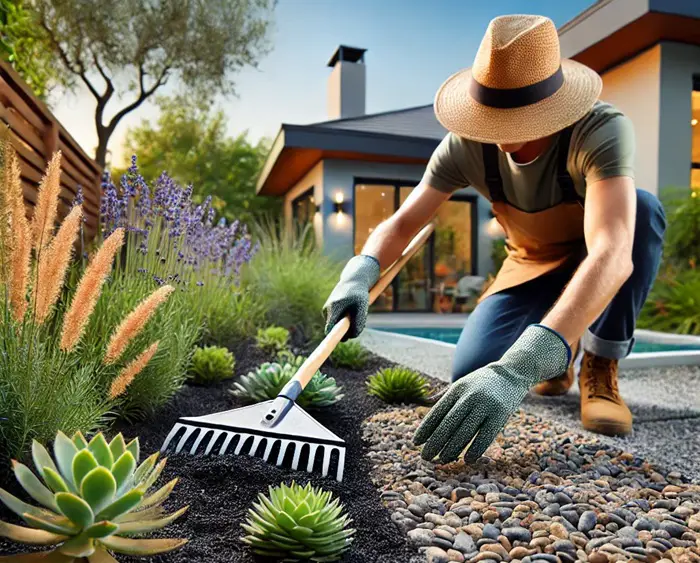
Do You Really Need Mulch – Risks of Applying Too Much of It
If you’re serious about soil health, mulch isn’t just an option—it’s a necessity. In fact, applying a proper layer of mulch can transform your soil in many more ways:
- Regulates soil temperature – Keeps roots cozy in winter and cool in summer.
- Reduces evaporation – Holds onto moisture, so you water less often.
- Prevents erosion – Stops wind and rain from carrying away precious soil.
- Suppresses weeds – Less time pulling weeds, more time enjoying your garden.
- Improves soil fertility – As organic mulch decomposes, it enriches the soil.
- Supports microbial life – Encourages the growth of beneficial bacteria and fungi.
Can you overdo it?
While mulch is a gardener’s best friend, too much of a good thing can cause problems:
- Blocks sunlight and air, suffocating plant roots.
- Prevents water from penetrating the soil, leaving plants thirsty.
- Encourages mold and fungus growth, creating a breeding ground for disease.
The key is balance—a layer 2-4 inches thick is usually just right. Apply too little, and it won’t be effective. Apply too much, and you might be doing more harm than good.
Also, be aware that mulch isn’t a “set it and forget it” solution. Depending on the type, climate, and soil conditions, you may need to replenish it every 1-2 years.
Best Practices for Applying and Maintaining Non-Flammable Mulch
Mulch can be a landscaping hero, but even the best heroes need rules to follow. To keep your yard both stunning and fire-resistant, give flammable mishaps no room to thrive.
- First, maintain a buffer zone—at least five feet—between your mulched beds and any structures. This keeps flames from getting cozy with your home.
- Next, resist the urge to pile mulch like a mountain; a thin layer is plenty and prevents unwanted moisture buildup that could secretly sabotage your plants.
- And don’t forget the cleanup! Fallen leaves and twigs may seem harmless, but they’re an open invitation for fire hazards—sweep them away regularly.
If you are looking for safe mulch alternatives for your furry friend, remember that dogs and mulch don’t always mix well—some pups see it as an all-you-can-eat buffet, which can lead to digestive disasters.
But don’t panic, there are plenty of pet-friendly alternatives to keep both your garden and your four-legged friend happy. Try shredded newspaper for a lightweight, eco-friendly option, or go for a straw if you want a rustic touch.
Pine needles work well for acidic soil lovers, while coconut coir adds a tropical twist to your yard. Bark chips provide a natural look without the digestive risks, and gravel is a no-nonsense choice for durability.
Still unsure? A quick call to your vet can ensure your mulch game is as safe as it is stylish.
Final Thoughts
If bark mulch dries and catches fire, it can waft into the air and spread to your home. These are also expensive materials that need to be replaced and maintained often.
Many substitutes to mulch that I discussed above provide similar benefits and different aesthetics. Plus, they are often cheaper or easier to maintain.
Why not pick the best alternatives that you can use around trees, get creative, and make your garden look different than everybody else’s?
Share the post "Alternatives to Bark Mulch (That Are Least Flammable)"
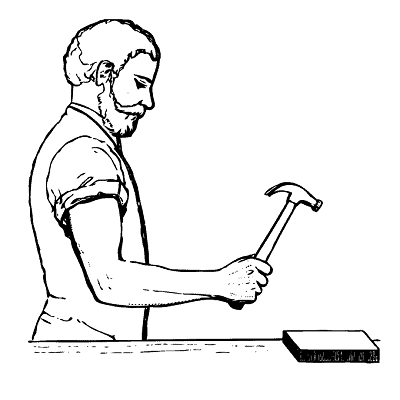
Hi, I am Mark Garner a professional carpenter, woodworker, and DIY painter. I live in the small city of Peoria, Arizona as a semi-retired woodworker. I have started this blog with a simple motive to help you with my wood experience in this sector. If you like to know more about what I love doing and how it all got started, you can check more about me here.


